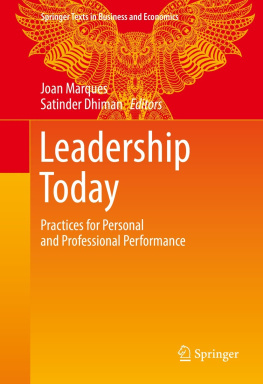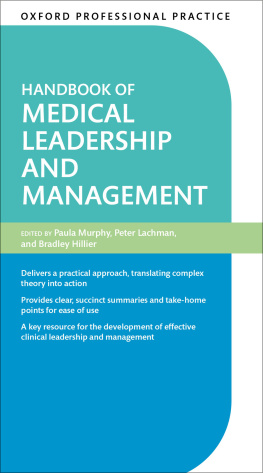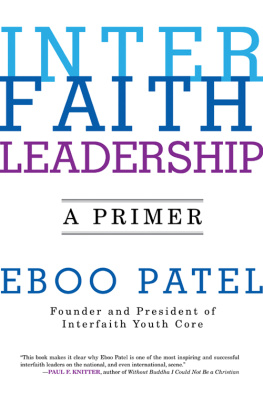Dhiman Satinder - Leadership Today Practices for Personal and Professional Performance
Here you can read online Dhiman Satinder - Leadership Today Practices for Personal and Professional Performance full text of the book (entire story) in english for free. Download pdf and epub, get meaning, cover and reviews about this ebook. City: Cham, year: 2017;2018, publisher: Springer International Publishing, genre: Business. Description of the work, (preface) as well as reviews are available. Best literature library LitArk.com created for fans of good reading and offers a wide selection of genres:
Romance novel
Science fiction
Adventure
Detective
Science
History
Home and family
Prose
Art
Politics
Computer
Non-fiction
Religion
Business
Children
Humor
Choose a favorite category and find really read worthwhile books. Enjoy immersion in the world of imagination, feel the emotions of the characters or learn something new for yourself, make an fascinating discovery.
- Book:Leadership Today Practices for Personal and Professional Performance
- Author:
- Publisher:Springer International Publishing
- Genre:
- Year:2017;2018
- City:Cham
- Rating:3 / 5
- Favourites:Add to favourites
- Your mark:
Leadership Today Practices for Personal and Professional Performance: summary, description and annotation
We offer to read an annotation, description, summary or preface (depends on what the author of the book "Leadership Today Practices for Personal and Professional Performance" wrote himself). If you haven't found the necessary information about the book — write in the comments, we will try to find it.
This textbook provides a clear understanding of leadership needs in todays business world, explained within the scope of hard and soft leadership skills. It captures qualities and skills such as spirituality, empathy, moral behavior, mindfulness, empathy, problem solving, self-confidence, ambition, knowledge, global understanding, and information technology. This text explains and provides guidelines for the implementation of each skill and includes examples from contemporary and historical leaders inviting the reader to consider each quality and engage in self-reflection. This book deviates from excessive theoretical descriptions presenting a timely, hands-on approach to leadership.
Featuring contributions form academics and professionals from around the world, this text will be of interest to students, researchers, professionals in business and leadership who aspire to lead beyond their immediate environment.
Dhiman Satinder: author's other books
Who wrote Leadership Today Practices for Personal and Professional Performance? Find out the surname, the name of the author of the book and a list of all author's works by series.








